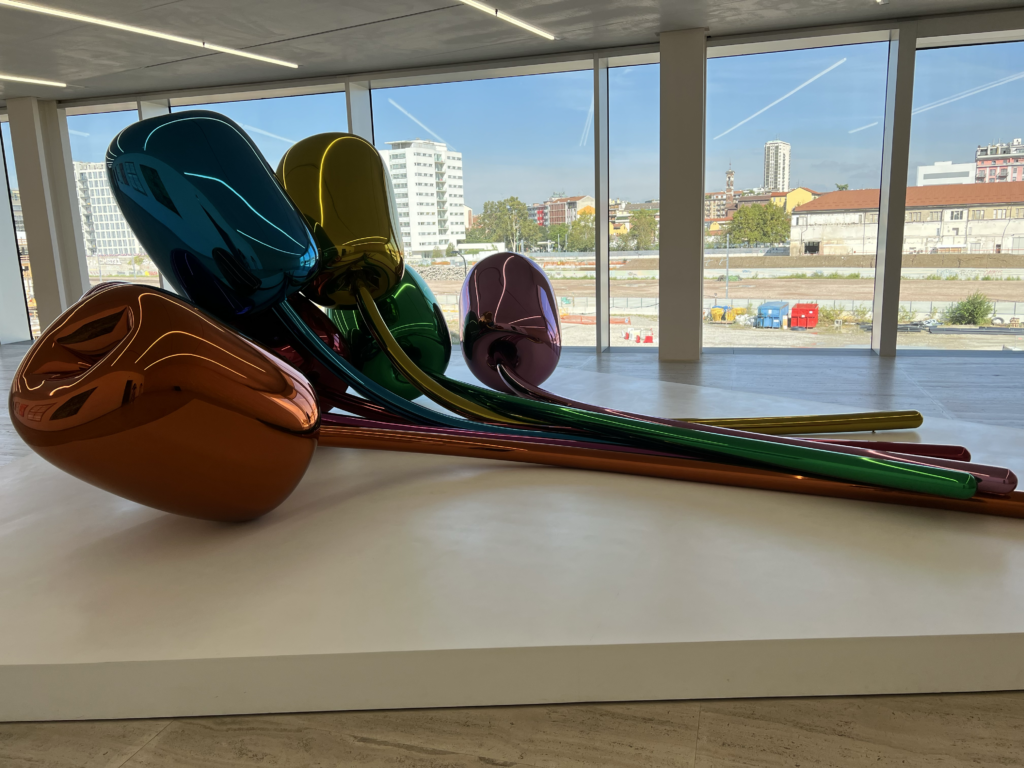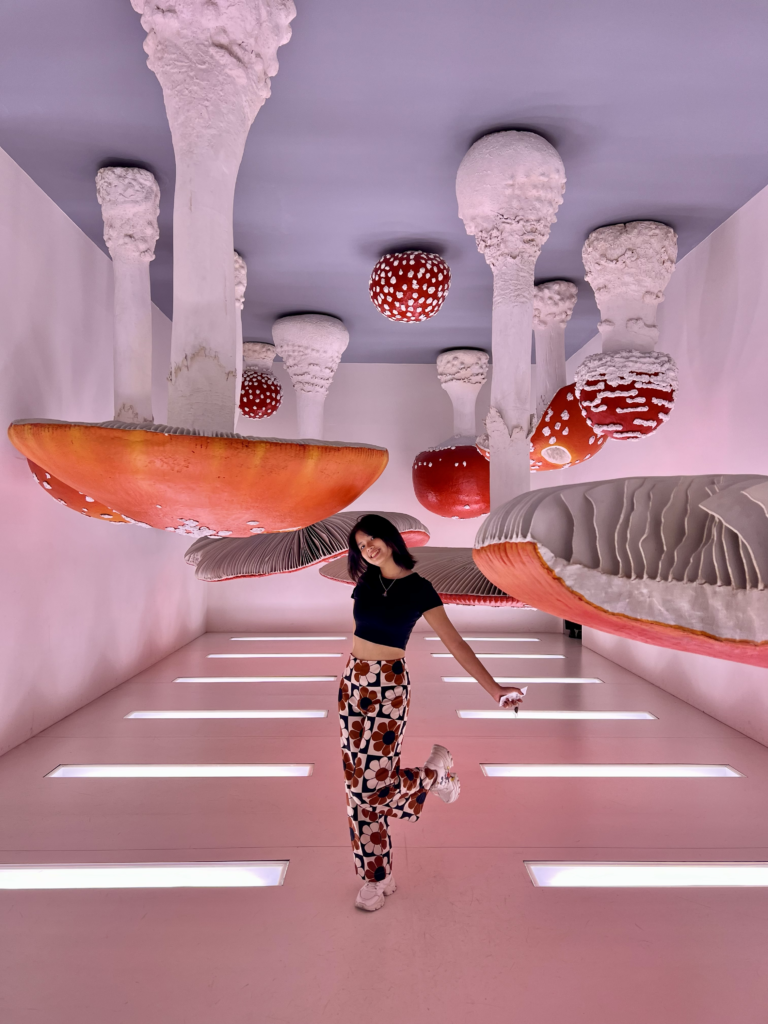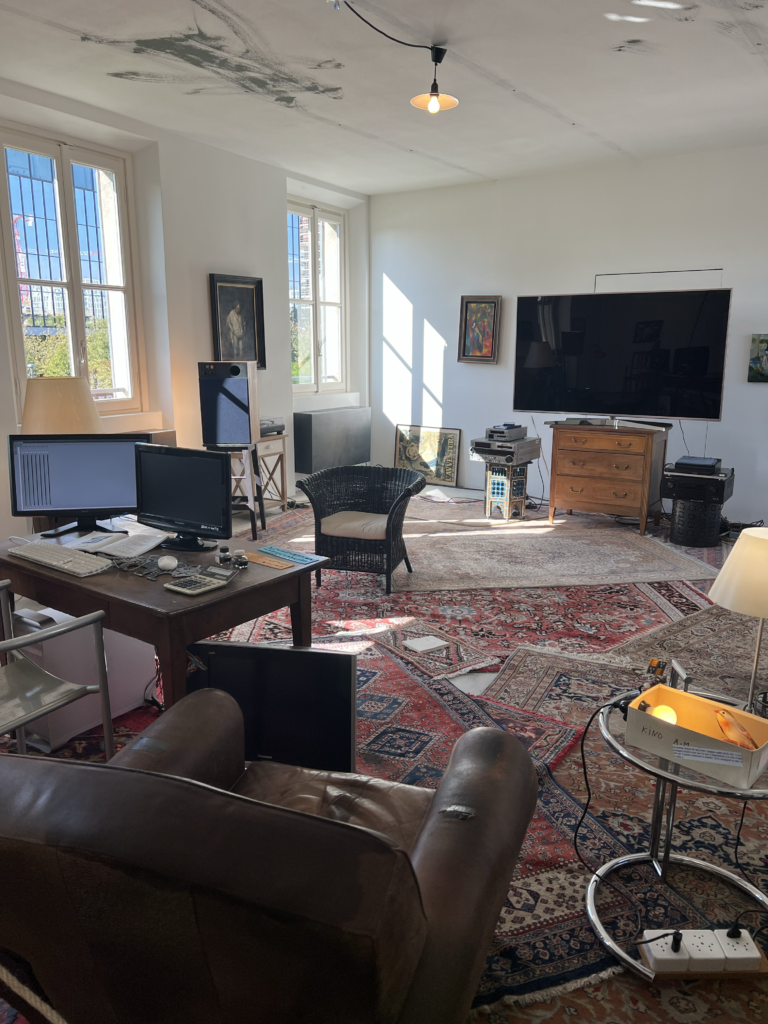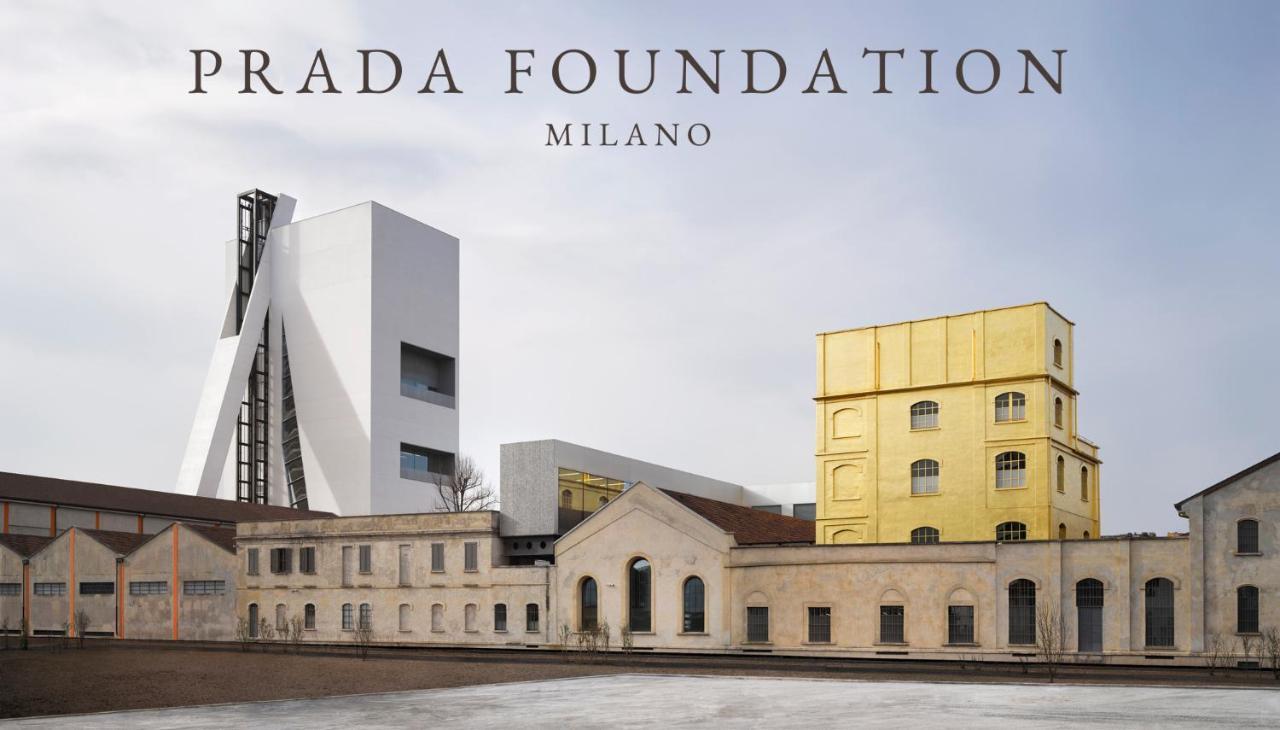When I first arrived at Fondazione Prada in Milan, I wasn’t exactly sure what to expect. I knew it wasn’t a fashion museum, but being established by Miuccia Prada herself, the youngest granddaughter of Mario Prada, I figured there’d be a certain flair to it. And I wasn’t wrong. The museum, founded in 1993, focuses on contemporary art, but the Prada name gives it a distinct sense of style and cultural depth.

The venue itself is massive, a blend of old and new architecture conceived by the famous Rem Koolhaas and his OMA team. It used to be a distillery from the 1910s, and now it’s a mix of seven existing buildings combined with three new ones. As soon as I walked in, you felt the collision of eras and ideas: modern glass towers and concrete meet older, more industrial spaces. It’s an odd but striking blend. The reception area felt quiet and low-key, but as I looked around, I could tell the museum would take some time to explore. The space is so vast that you really need to set aside at least two hours if you want to soak it all in.
I started with the Torre, which is the main building off to the far right. It’s nine stories tall, each floor presenting a different perspective on space. Some floors are rectangular, some are trapezoidal, and they alternate between concrete and glass facades. The architectural design plays with light in interesting ways—some rooms bathed in soft northern light, others glowing with an almost blinding zenithal light. The vibe of the place is hard to pin down because of the constant shifts in layout, but that’s what makes it so intriguing. Each floor has its own personality, and Rem Koolhaas himself said it best: the space doesn’t try to blend into one cohesive design. It’s all about contrasts—new meets old, wide meets narrow, horizontal meets vertical.

My highlight of the museum must be the Haunted House. On the higher floors of Fondazione Prada’s old building, Robert Gober’s works blend the familiar with the unsettling, turning everyday objects into thought-provoking, hybrid creations. His oversized Farina box and architectural fragments like Corner Door and Doorframe distort ordinary elements, leaving them both recognizable and strangely alien. Gober’s exploration of themes like sexuality and politics is paired with Louise Bourgeois’ emotionally charged works on the first floor, where her intimate Cell (Clothes) and fabric sculpture Single III create a haunting atmosphere. Together, their pieces challenge perceptions of memory, body, and identity in a way that’s both subtle and deeply evocative.
I also absolutely loved the mushroom room, where mushrooms hung upside down in a surreal display. To get there, you first have to walk through a pitch-black alley, with no light to guide you—just your senses and instinct to navigate the dark without bumping into the walls. It was an oddly immersive and disorienting experience that made the mushroom-filled room feel even more otherworldly.

Some floors of the Torre left me completely awestruck, especially the ones with bold, large-scale exhibits. On the other hand, some other floors didn’t quite hit the mark for me. A few exhibits felt flat or just underwhelming, almost as if they didn’t quite know what to do with the immense space.
One thing that added to the confusion was the lack of signage throughout the museum. Despite being handed a map at the entrance, I found myself getting lost more than once. It wasn’t always clear which exhibits were open or how to enter certain spaces. Even finding the bathrooms became an adventure, and not in a good way. They looked cool but were oddly hard to navigate—way more complicated than they should’ve been.

Despite the occasional miss, Fondazione Prada is definitely worth the visit. There’s something about the overall atmosphere that makes the experience unique, from the blend of old and new architecture to the wide range of contemporary art. Sure, some exhibits felt like duds, and getting around could be a bit confusing, but the highlights made up for it. For anyone interested in architecture, modern art, or just looking for a different kind of cultural experience in Milan, Fondazione Prada offers a thought-provoking escape from the city’s usual tourist spots.
